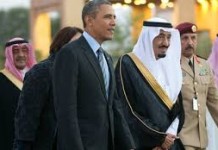Context
Ever since the Kargil conflict in 1999, Indian administered Kashmir has been relatively quiet. Pressured by the United States, former President Musharraf, tried to clamp down on Kashmiri jihadists who would cross over the Line of Control to fight against Indian occupation. Now the reverse is occurring and the attacks have taken place on Azad Kashmir, near the Pakistan-Kashmir border. Pakistan can hardly afford a FATA like situation develop on its eastern flank.
.jpg)
Analysis
some pertinent dates:
- January 6, 2010: a bombing outside Muzaffarabad takes place killing four Pakistani soldiers.
- December 2009: a bombing kills eight Shia Muslims.
- November 2009: three suicide bombers blow themselves up in Muzaffarabad, the regional capital.
- June 2009: a suicide bomber kills two soldiers and injured three others in the capital.
The bombing on January 6, 2010 occurred a day after Pakistani President Asif Ali Zardari visited the area and stated that Pakistan is prepared for a “1000 Year Ideological War over Kashmir.” The attacks were followed by an incident on the Indian side of the Kashmir border: the Srinagar police reported that lashkare toyiba (LeT)-linked militants threw a grenade and opened fire at them in the historic Lal Chowk, or Red Square.
Tensions in the region have also mounted in the wake of the following:
- The Indian Army Chief General Deepak Kapoor has suggested the possibility of a limited war with Pakistan, often referred to as the “Cold Start” strategy.
- The attack on CIA Forward Operating Base Chapman in Khost Province of Afghanistan, which according to media reports, was planned by Al Qaeda’s Lashkare al-Zil under Pakistan’s ex-commando, Ilyas Kashmiri. In the aftermath of this attack, the US is subtly increasing pressure on Pakistan to initiate an operation in North Waziristan as well as increasing drone attacks there.
- The attempt on Christmas Day to blow up an inbound Delta flight to the US, which, although a failure, nevertheless highlighted shortcomings in the US security apparatus. The alleged perpetrator is originally from Nigeria and received his training in Yemen.
The reports from the Israeli media of an escalating influx of Pakistani jihadists into gaza, Hamas-ruled Palestinian territory and Yemen, all with ties to Al Qaeda’s new headquarters in Baluchistan.
To conclude: we at PoliTact believe that Al-Qaeda’s strategy for countering US escalation in Afghanistan is to multiply the number of hot spots requiring US attention – while creating distractions for Pakistan. Furthermore, Indian and Israeli media blitz is assisting to build the pressure on Pakistan to widen its war against extremists.
Tell Us What You Think
Feedback@politact.com



